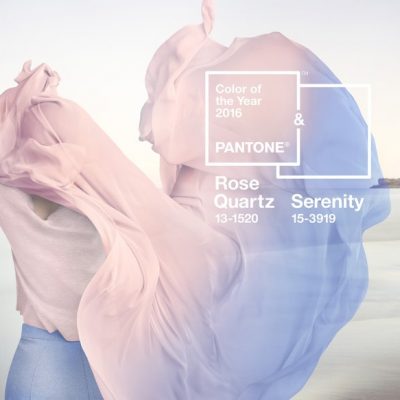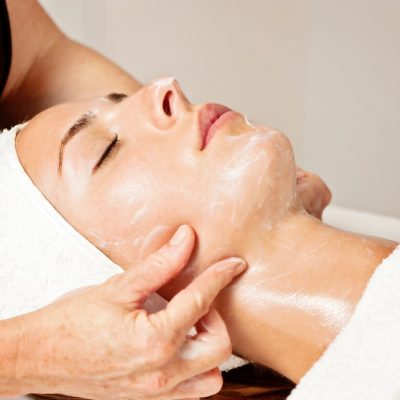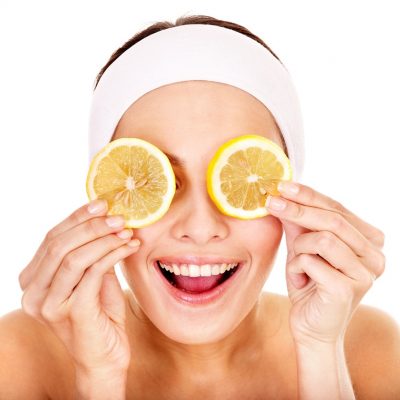PERFORM A HAIR CONSULTATION
A consultation at Bellezza usually takes anywhere from 10-20 minutes depending on the condition and history. It is important to share all necessary hair history, at home regimens, products used and treatments used prior to the visit. Stylists will also want to be sure to ask clients about allergies and medications so they can take extra precautions when selecting and applying products. Leaving out key information can cause less than desired results, so stylists must take the time to ask plenty of questions.
During an initial consultation the stylist will analyze the texture, curl pattern, growth pattern, elasticity, porosity, length, and density to determine the condition of the client’s hair.
Hair Texture
Hair texture is separated into three categories: thick (or coarse), medium, and fine. Texture does not refer to how the hair feels, but rather each strand’s diameter. Stylists can determine if hair is coarse, medium, or fine by holding a single strand of dry hair between two fingers. It is important to distinguish between thick hair texture and density. Thick hair texture refers to coarse hair while thick hair density refers to the amount of hair follicles per square inch on your scalp.
Coarse or thick hair has the largest diameter. Coarse hair tends to be more resistant to chemical services such as relaxer, color, or perm because it has the highest protein structure. Coarse hair can hold curls and style easily, and is less prone to heat damage, but requires extra care including a suitable cut and hair care regimen to maintain hair health and beauty.
Medium hair is in between both ends of the texture spectrum. It is relatively easy to process and holds style well. It is not as prone to breakage as fine hair and is more pliable than thick hair.
Fine hair is the thinnest hair texture and very easy to process. It is prone to damage from chemical treatments because it the most fragile of all hair types. It often lacks the inner layer (called the medulla), which adds to its fragility. Fine hair requires extra care to maintain hair health without weighing the hair down, and the expertise of a knowledgeable hair specialist when considering color or other chemical treatments.
Curl Patterns
Curl patterns can be classified into four different categories: straight, wavy, curly, and kinky. Each of these categories, typically assigned a number from 1 to 4, can be split into three more types, a for fine texture, b for medium, and c for thick/coarse. Hair types are often given a value such as 2b, which would be wavy hair with a medium texture.
The curl pattern speaks volumes to your stylist in regards to its own special characteristics such as: prone to frizz, easy or resistant to style, dryer time, moisture content and many more.
Growth Patterns
Prior to performing services on clients, especially haircuts, stylists should analyze the client’s hair growth patterns. Cowlicks, whorls and hair streams occur as a result of growth patterns. Hair follicles rarely grow straight out from the scalp.
Cowlicks are generally seen around the front hairline where a small group of hairs stand straight up.
Whorls form in a circular pattern and can be seen in different areas of the head, but mainly in the crown of the head.
Follicles slope in a certain direction which causes hair to flow in that direction. This is called a hair stream. For example, a natural part is formed when two streams flow in opposite directions.
Elasticity
Elasticity is the ability of hair to stretch and contract. It is the first factor of hair strength. Stylists may choose to perform a strand test to determine the elasticity of hair. When stylists test the elasticity of hair, strands are selected from different areas of the head. Stylists hold a wet single strand of hair and stretch the hair. If the hair returns to its original form without breaking just like that of a rubber band, it is considered normal elasticity.
Good elasticity is represented by hair stretching approximately 20 percent of its natural length when dry and up to 50 percent when wet with no breakage.
The symptoms of low elasticity include breakage, hard to hold curls and styles. The chemical services and products selected must have a lower pH to prevent damage and over-processing.
Porosity
Porosity is the hair’s ability to absorb moisture. This is the second factor of hair strength. The condition of the cuticle layer of the hair is directly related to the hair’s porosity. Hair that is resistant to penetration has a compact cuticle layer and is considered to be normal, healthy hair. The porosity of hair can be categorized as low porosity, average porosity and/or high porosity.
Low porosity – Resistant hair: the hair’s ability to absorb water is low, and the cells of the cuticle layer are not raised, which prevents solutions from entering into the cortex layer of the hair.
Average porosity – Normal Hair: the cells of the cuticle layer are slightly raised. It is fairly easy to moisturize this type of hair because the hair shaft will accept and retain moisture.
High porosity – Dry, brittle or damaged hair: the hair strand may feel rough, and cuticle layer cells are raised. The porosity can be checked on dry hair by moving the thumb and fore finger up and down the single strand. This type of hair is difficult to moisturize because water enters and leaves the hair shaft too easily. Generally high porosity can be determined easily because the hair is usually in an extremely unhealthy state.
Length
Hair typically grows about 6 inches per year. During this same period as a number of strands may be growing, your hair will also experience shedding at the same time. Many factors determine the rate and length of hair growth including diet, hair care practices, genetics, health, medication, and hormones.
Hair grows through three cycles: anagen, catagen and telogen.
The Anagen Phase is the active growing cycle. During this phase, hair grows 1cm every 28 days and stays in this growth phase for 2 to 6 years. Depending on the length of time one stays in this active phase will determine the common length of their hair. If you find that no matter what you do, your hair only grows to a certain length then that means you have a short active phase of growth.
The Catagen Phase is known as the transitional phase, which lasts approximately 1 to 2 weeks. During this time growth stops and the papilla begins to separate from the follicle. This process cuts the hair off from its blood supply and from the cells that produce new hair. Only 3% of all hair is in this phase at any time.
The Telogen Phase is the resting phase and accounts for 10% – 15% of all hair. This phase lasts 5 to 6 weeks. During this phase the hair follicle is at rest and if you were to pull out a hair you would reveal a solid white mass at the root of the hair. This is the typical phase for shedding, which amounts to 25 – 100 hairs per day.
After the Telogen Phase the cycle begins again and new hair is formed during the Anagen phase.
Density
Do you know how many hairs the average head contains? The answer is 100,000.
The density of hair is measured by the number of individual strands per square inch. On average most people have approximately 2,200 hairs per square inch or 2.5 cm. One’s natural hair color on average can determine the density of the hair. For example, a natural blond on average has 140,000 hairs, natural brown – 120,000, natural black – 108,000, and natural red – 90,000.





